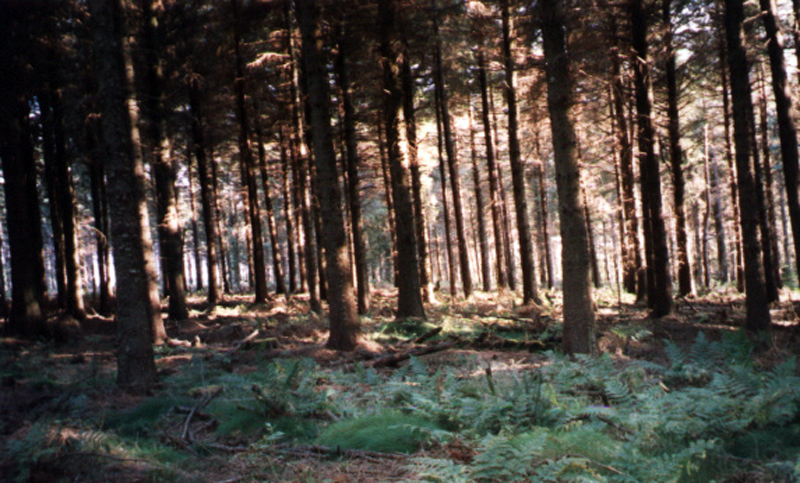
During the early evening of 5th August 1942 this aircraft belonging to No.15 (Pilot) Advanced Flying Unit was flown on a cross country training flight that saw a pupil pilot being joined with an instructor to fly a navigation exercise using various towns as turning points. While the unit, No.15 (P)A.F.U., was technically based at Leconfield they also used Acaster Malbis airfield for their training activities and as a relief landing ground, it is believed that Oxford R6155 had set out from there and not Leconfield. The aircraft took off at around 17.30hrs and the pilot successfully flew the first two legs of the exercise. Having used Masham as the second turning point the aircraft was to have been flown south-east to use Bridlington as the third point. This route appears to have been plotted to take the aircraft just south of the North York Moors, to overfly Coxwold, Hovingham and Malton to avoid the higher moorland. Unfortunately as the aircraft headed away from Masham towards the North Yorkshire Moors the weather became poor with thick cloud and rain effecting visibility. The aircraft was being flown at 2,000 feet but in trying to fly below the cloud base the pilot descended to 1,500 feet. The pilot did not realise that the aircraft had flown off course so crashed into high ground at around 18.30hrs. The two airmen were fortunate and both escaped with only injuries. Exactly where this incident occurred has yet to be found but it appears to have been in the Upsall area. This incident is briefly mentioned in a reasonably accurate transcript of police records I was given and the location listed puts the site near Steeple Cross, between Boltby Bank and Kepwick Bank on the very western side of the North Yorkshire Moors. Given thath this is generally correct, plotting where this location is and the intended route it appears that the pilot had flown north east after leaving Masham and not south east.
Oxford R6155 was built to contract N.19646/39 by Airspeed Ltd. at Portsmouth and was delivered into M.U.storage with 37 M.U on 29th October 1940. It then spent some months in store before being taken on charge by 15 S.F.T.S. at Kidlington on 14th March 1941. The unit moved to Leconfield in February 1942 and was re-designated as No.15 (Pilot) Advanced Flying Unit (or 15 (P)A.F.U.) on 1st March 1942. Following this incident in August 1942 the damage was assessed and it was deemed to be Cat.E2/FA which meant it was not repairable. It was struck off charge on 16th August 1942.
Pilot (pupil) - P/O Albert Victor Barraclough RAFVR (124382). Injured.
Pilot (instructor) - Sgt Ronald Howard Willis RAFVR (1335799). Injured.
Albert Barracough was born in Bradford on 7th March 1920. He received a commission in the RAFVR to the rank of P/O on probation on 1st May 1942 and then rose to F/O on probation on 1st November 1942 and F/Lt on 1st May 1944. Post-War he appears to have left the RAF but then re-joined the RAFVR, being appointed to a commission as F/O on 30th January 1951. He was swiftly promoted to F/Lt on 19th July 1951. On 30th January 1956 he extended his period of service for a further five years. He died in the Sleaford area of Lincolnshire on 17th March 1990 at the age of seventy. He is buried in Sleaford Cemetery.
Ronald Willis was born on 22nd July 1921 at Guildford, Surrey. He recovered from his injuries sustained in this accident at Upsall and completed his training, being posted to 7 Squadron. On the night of 23rd / 24th May 1943 he was flying an operational flight to Dortmund when his Lancaster was badly damaged. He managed to make a return to England and safely landed at Middleton St.George. For his actions he was awarded the Distinguished Flying Medal, Gazetted on 6th July 1943. The citation for his award was detailed and stated "During an operational sortie one night in May 1943 this airman's aircraft was engaged by an enemy fighter. Repeated attacks were made during which Sergeant Willis and three members of his crew were wounded and the aircraft was severely damaged. Despite his wounds, Sergeant Willis kept control of the bomber and after skilfully evading the enemy fighter set course for home. He had no serviceable navigational instruments and steered a rough course by the stars. By skilful airmanship he successfully flew his damaged aircraft to this country where he made a safe landing and not until then did he report his wounds. In extremely harassing circumstances this gallant airman set a sterling example of fortitude and devotion to duty." He had actually received a commission in the RAFVR to the rank of P/O on probation on 9th April 1943 but notification of this took some months to be printed in the London Gazette. He then rose to F/O six months later. He appears to have left the RAF during the 1946 reduction in RAF numbers following the terms of their wartime commissions. He died in Surrey on 10th June 2006.

If the military map reference, sourced from a police record, is correct and then converted to the modern map system it then puts the crash as being in what is now this forest and somewhere in the photograph above. I didn't find any sign of the aircraft when I walked through the woodland in 2008. The woodland was planted in the years after the War and part has since been felled by 2017.